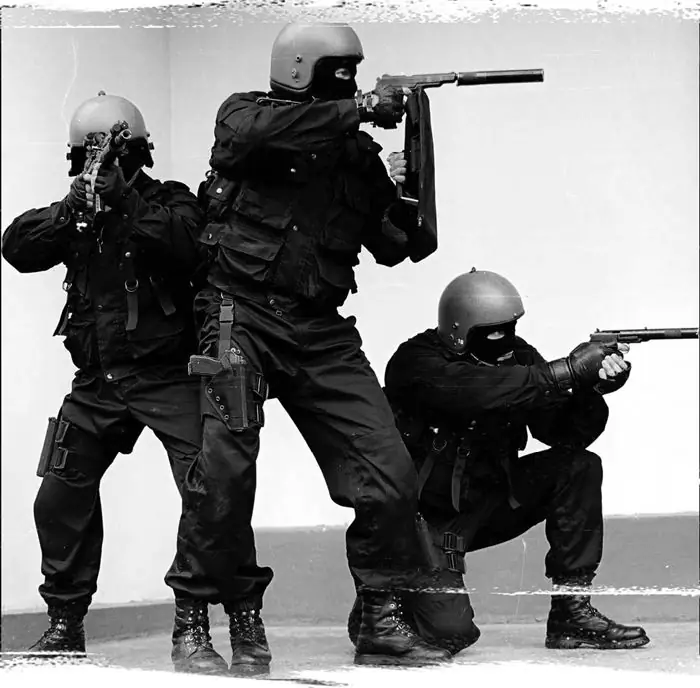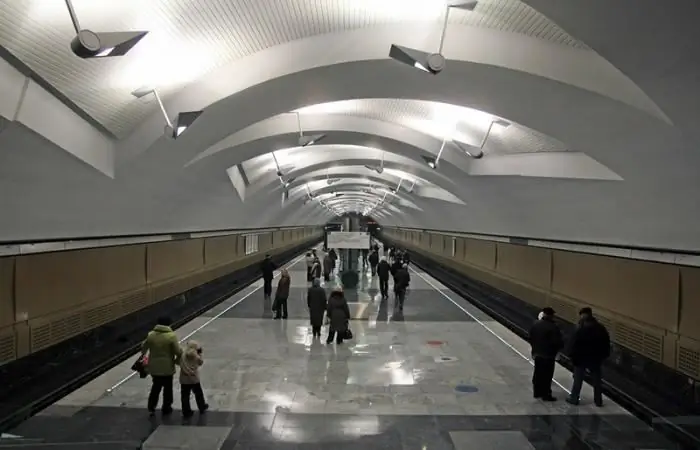2025 Author: Howard Calhoun | [email protected]. Last modified: 2025-01-24 13:10:27
The classic metro tunnel in Moscow was built without an existing plan and without planning for further road development. This led to some kind of chaos in the creation of the transport system, which is observed to this day. Currently, they are guided by uniform rules, according to the document SNiP 32-02-2003.
How was the underground transportation system created?
The first metro tunnel was decided to be built in 1931. Projects were created on the basis of geological data. The materials for building at that time were chosen reinforced concrete floors, which have survived since then.

The subway tunnel was dug within a year, about 2 million cubic meters were shipped to create long-term mines. About 88 thousand tons of metal was spent on laying the tracks and strengthening the vaults. The first buildings contained wooden structures and were equipped with massive insulating materials.
The metro tunnel turned out to be a costly project, it took more than 800 million rubles. Reinforced concrete vaults were later replaced with rubble masonry, but at that time the first construction option was more actively used. Inclined vaults were reinforced with cast-iron tubing,roofing material, glassine glued with bitumen were chosen for waterproofing materials.
Such structures require careful and constant maintenance, which is no less expensive after the facility is put into operation. The Moscow Metro has worn out over the years and requires reconstruction, comparable in cost to the construction of a new tunnel. Therefore, new projects already contain options for restoration in a few decades and provide for the modernization of buildings.
Materials for the early subway
The construction of tunnels was carried out with reinforced concrete floors, on which outer layers of gravel, a layer of earth, were applied. Vaulted ceilings provided high strength and reliability of structures. On open sections of the metro, the tracks were made with flat ceilings. Due to the lack of load, ground tracks were carried out in a rectangular way.

Tunnel construction continues all the time. Moscow is growing, and the requirements for passenger transportation are also increasing. The materials of early construction can no longer withstand the current speeds and traffic intensity of the cars. But the round shape of the tunnels is still preserved to this day. It is easier and more reliable to isolate such a structure from the water that flows over the heads of citizens during a trip to the subway.
Moscow Metro has several levels of underground. This is necessary to exclude intersecting lines. The design itself includes a direct passenger boarding area and travel tunnels. All branches are connected by transitions, which makes it easier to move tolong distances on a difficult route.
Subway device
Underground passages of metro stations have arched vaults similar to tunnels. In places where platforms were equipped for boarding and disembarking passengers, load-bearing columns were installed. Here, too, the upper part was done in an arched way.

Platforms tried to be placed between the tracks to facilitate the boarding and disembarkation of passengers. But some stations still have side platforms, such as the Komintern station. Service rooms are often located under the platform itself, less often they are taken out to the area of the sockets, where there is a deep level of laying the tracks.
Metro tunnels end with dead ends where trains turn around to move in the opposite direction. There are also spare sedimentation tanks for storage of faulty wagons. On some routes dead ends are built in the middle of the train. Such return routes are available at the Komsomolskaya station, which is located in the city center. This measure was required to ensure more intensive train traffic.
Features
The underground subway is laid on several levels, which helps to organize an efficient route system. Stations are within walking distance of each other. The depth of laying varies within the following limits:
- Deep tunnels - the size is calculated to the level of the platform from the surface of the street and ranges from 16 to 35 meters.
- Surface tunnels are laid to a depth of 7 to 9meters.
- Medium depth tunnels are placed between 9 and 16 meters.
The length of the stations is fixed, designed for 8 cars. And the width varies from 10 to 21 meters and depends on the depth of the tunnels. Each room is equipped with emergency lighting in case of an emergency. The lighting rate at the stations is organized in accordance with the standard, indicating the requirement of 100 lux.

The distance between stations varies from 500 to 1400 meters. The tunnels with elevators, called escalators, are inclined at an angle of 30 degrees to the horizon. The tunnels are heated with air from the hauls to the stations, so the possibility of cooling the tracks is excluded.
Room decoration
Some stations are classified as architectural heritage. Each of them has its own unique image. Previously, materials such as granite and marble were used for decoration. The surfaces of columns, walls, vaults were filled with patterns. Lighting was provided by massive lighting fixtures.
Railway tunnels have a track gauge similar to the subway. If desired, an ordinary wagon can easily follow underground lines. New metro routes often intersect with existing railway lines, making it easier to modernize the metro and open new lines.

Tunnel lighting is carried out around the clock. To prevent accidents in the subway, signaling traffic lights with a red and green signal are installed. The driver will not be able to overcome the prohibiting light. An auto-lock system is provided, when the brakes are activated independently when the car hits a special lever.
Automatic
The transport tunnel is a complex structure equipped with dispatching systems, protective mechanisms, and control devices. Along the edge of the tunnel are power lines with a high voltage of direct current of 825 volts. The required value is generated by special substations located deep underground.

The lead car is equipped with 4 engines with a capacity of 150 kW. The brakes of each car are pneumatically operated with an electric drive. The automation system ensures the normal movement of trains with an interval of 1.75 minutes. The speed of each train is estimated at an average speed of 40 km per hour. The maximum possible for each wagon is 75 km per hour. Modern trains can run much faster, but this requires new tracks to be laid.
Track upgrade options
To extend the operational capabilities of the tunnels, constant supervision and interior decoration are required. This is done by accredited organizations with extensive experience in carrying out this kind of work. To do this, the arches and load-bearing parts of the tunnels are being strengthened.

Improving the water resistance of the foundation and finishing materials. Removal of accumulated moisture into common drains. Change in the characteristics of the adjacent soil. Replacementworn parts of reinforced concrete. To do this, pumping solutions into the formed cavities, the latest waterproofing materials, as well as moisture-resistant coatings are used.
Status monitoring
To prevent accidents, a monitoring commission is constantly working, which is able to detect voids in the vaults, cracks in the bearing parts of the walls and the foundation in time. The latest developments in instrumentation help to identify the smallest initial processes in concrete, metal parts.
For tunnel arches, it is important to stop the removal of soil covering the outer walls of the fortifications. To eliminate the negative effect, the injection method is widely used. A dense liquid composition is introduced into the resulting space, changing the properties of the soil. At the same time, the internal surfaces are treated with moisture-retaining substances.
Recommended:
Driver salary in Moscow. How much does a driver in Moscow earn

The profession of a driver is considered one of the most common and, accordingly, in demand. It is difficult to name an organization that would not need representatives of this profession. The driver, in addition to the main duty, that is, driving a vehicle, can carry out additional
The salary of a security guard in Moscow. Working conditions as a security guard in Moscow

Many want to get a job as a security guard in the capital of Russia. Consider the level of salaries of such specialists. What determines the salary level? Is it true that only employees with a license and a permit to carry weapons are hired?
Geox stores in Moscow: detailed addresses and metro

Geox stores in Moscow and the nearest suburbs present a summer collection with a riot of colors and colors. The company is accustomed to provide for all kinds of tastes. Heel - for every taste, from stable modifications up to jewelry studs. Leather - from suede to patent leather. For connoisseurs of the classics - active sophistication
Moscow food markets. Markets, fairs in Moscow and the Moscow region

Highly demanded, but few food markets in Moscow have great potential. The offered products are of excellent quality, the design of the workplaces is excellent. There are, however, price discrepancies and differences in the cleanliness of the territories
What new metro stations have opened in Moscow. Scheme of new Moscow metro stations

The Moscow Metro is rapidly expanding beyond the Moscow Ring Road. There are cars on automatic control, the scheme of new Moscow metro stations is constantly updated

